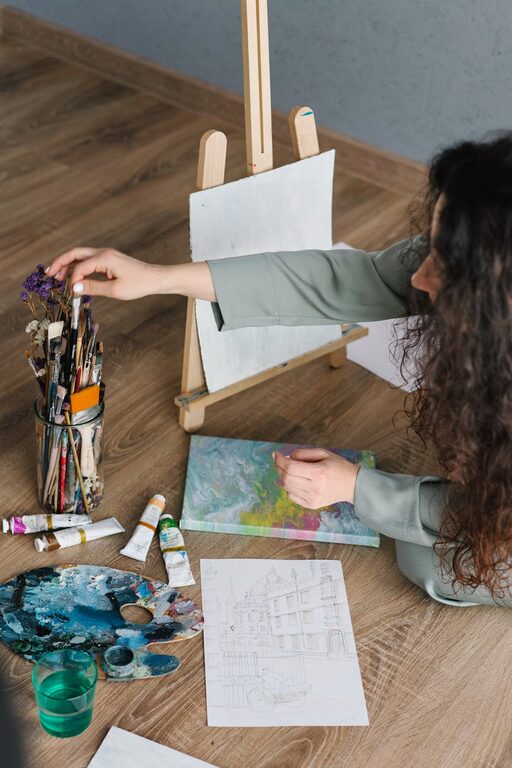
Creativity is often seen as a talent reserved for artists, writers, or musicians, but it’s actually a skill anyone can develop and nurture. Practicing creativity daily not only helps you solve problems but also brings joy and fulfillment to your life. The good news is you don’t need to overhaul your schedule or make drastic changes to unlock your creative potential. Small, consistent habits can make a big difference. In this post, we’ll explore simple and practical ways to incorporate creativity practice into your everyday routine.
Why Practice Creativity Daily?
Creativity isn’t just about art. It’s about thinking differently, finding new solutions, and expressing yourself in meaningful ways. When you practice creativity regularly, you:
– Improve problem-solving skills
– Reduce stress by engaging in enjoyable activities
– Increase mental flexibility and adaptability
– Boost confidence in your own ideas
– Enrich your personal and professional life
By making a little time each day for creative exercises, you invite fresh perspectives into your world.
Start with a Morning Creative Ritual
How you begin your day can set the tone for creativity. Consider adding one of these quick activities to your morning:
1. Free Writing for 5 Minutes
Set a timer and write whatever comes to mind—no editing or judgment. This practice clears mental clutter and sparks new ideas.
2. Sketch or Doodle
Even if you’re not an artist, doodling can stimulate the brain’s creative centers and help you visualize ideas.
3. Mindful Observation
Take a moment to observe your surroundings in detail. Notice colors, shapes, sounds, or smells you might usually overlook. This heightens awareness and fuels inspiration.
Use Prompts to Jumpstart Creativity
Sometimes the hardest part is knowing where to begin. Prompts can give your mind a gentle nudge.
– Try a daily writing prompt, such as “Describe your perfect day” or “What would a world without gravity look like?”
– Use photo or word prompts to create short stories or drawings.
– Explore creative challenge apps or websites that offer new prompts every day.
Engage in Creative Hobbies Regularly
Dedicating time to hobbies nurtures creativity in a relaxed and enjoyable way. Consider:
– Painting, drawing, or coloring
– Playing a musical instrument or experimenting with sounds
– Cooking and trying new recipes
– Gardening or crafting DIY projects
Set aside even 15–30 minutes a few times a week to explore these hobbies without pressure or expectations.
Change Your Environment and Routine
Shaking up your usual environment can spark fresh ideas:
– Rearrange your workspace or living area.
– Work or create in different locations, like a park or café.
– Try new routes during walks or commutes to notice different details and experiences.
Small changes encourage your brain to look at things in new ways.
Collaborate and Share Ideas
Creativity thrives in community. Sharing your ideas and collaborating with others can lead to unexpected breakthroughs.
– Join local or online creative groups or workshops.
– Share your projects with friends or social media communities for feedback.
– Brainstorm ideas with colleagues or family members regularly.
Listening to different perspectives expands your creative horizons.
Limit Distractions and Practice Focused Time
Creativity requires focus. Minimizing distractions helps your mind dive deeper into creative tasks:
– Turn off notifications while engaged in creative work.
– Use techniques like the Pomodoro Method to balance work and breaks.
– Dedicate specific times for creative activities in your daily schedule.
Creating this space supports uninterrupted thinking and flow.
Keep a Creativity Journal
Recording your ideas, sketches, or observations helps track your progress and keeps inspiration at your fingertips.
– Write down interesting thoughts or things you notice.
– Sketch quick concepts or mind maps.
– Reflect weekly on your creative journey and set new goals.
A journal becomes a treasure trove of ideas you can revisit anytime.
Embrace Mistakes and Experimentation
Creativity grows when you’re willing to try new things and accept failures as part of the process.
– Allow yourself to experiment without judging the outcome.
– View mistakes as learning opportunities, not setbacks.
– Celebrate progress over perfection.
This mindset makes creativity more enjoyable and sustainable.
Conclusion
Practicing creativity every day doesn’t have to be complicated or time-consuming. By incorporating simple habits like morning rituals, using prompts, engaging in hobbies, and embracing experimentation, you open up a world of creative possibilities. Start small, stay consistent, and watch your imagination flourish in both your personal and professional life. Remember, creativity is a muscle—the more you use it, the stronger it becomes!
Feel free to share your favorite way to practice creativity in the comments below!




